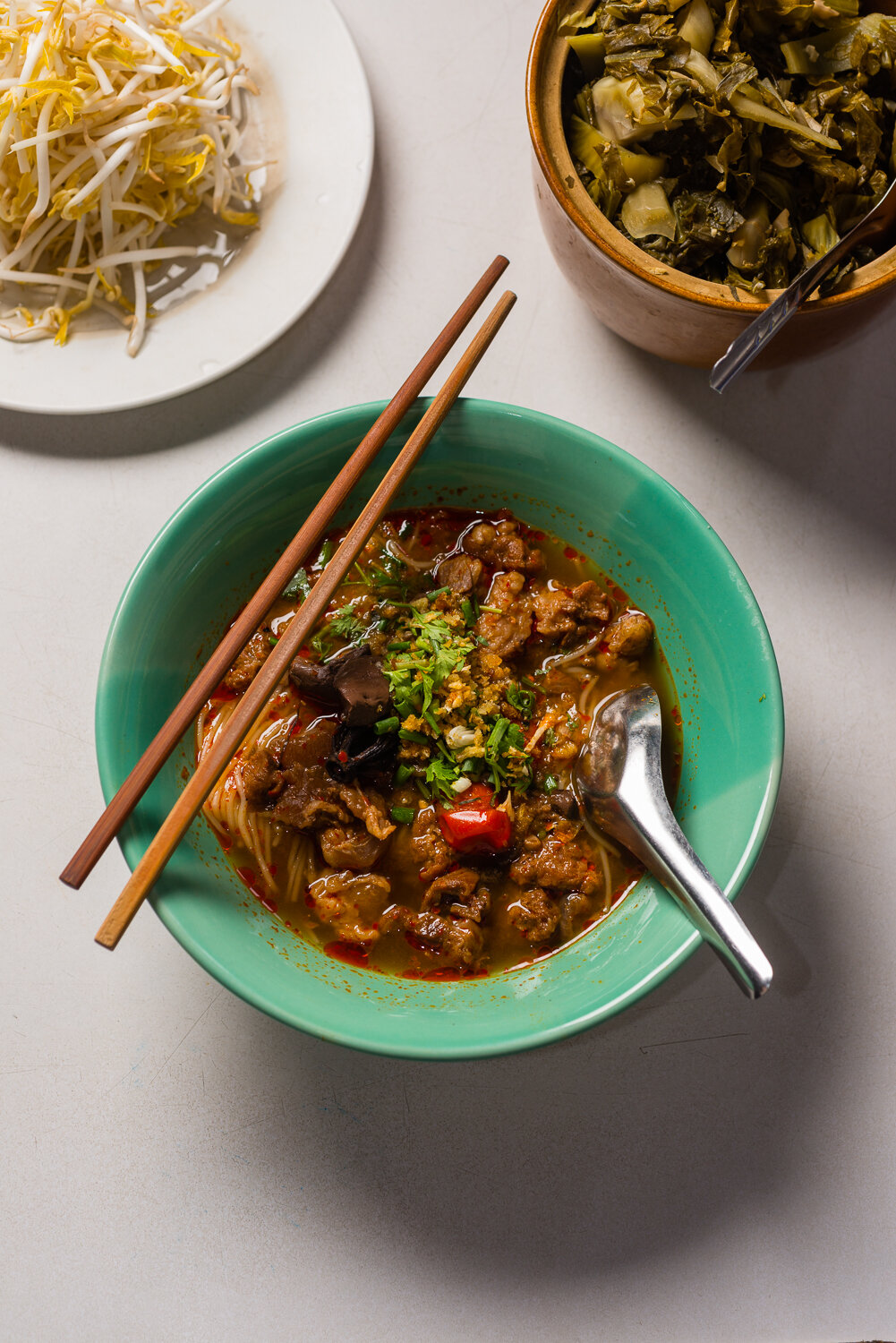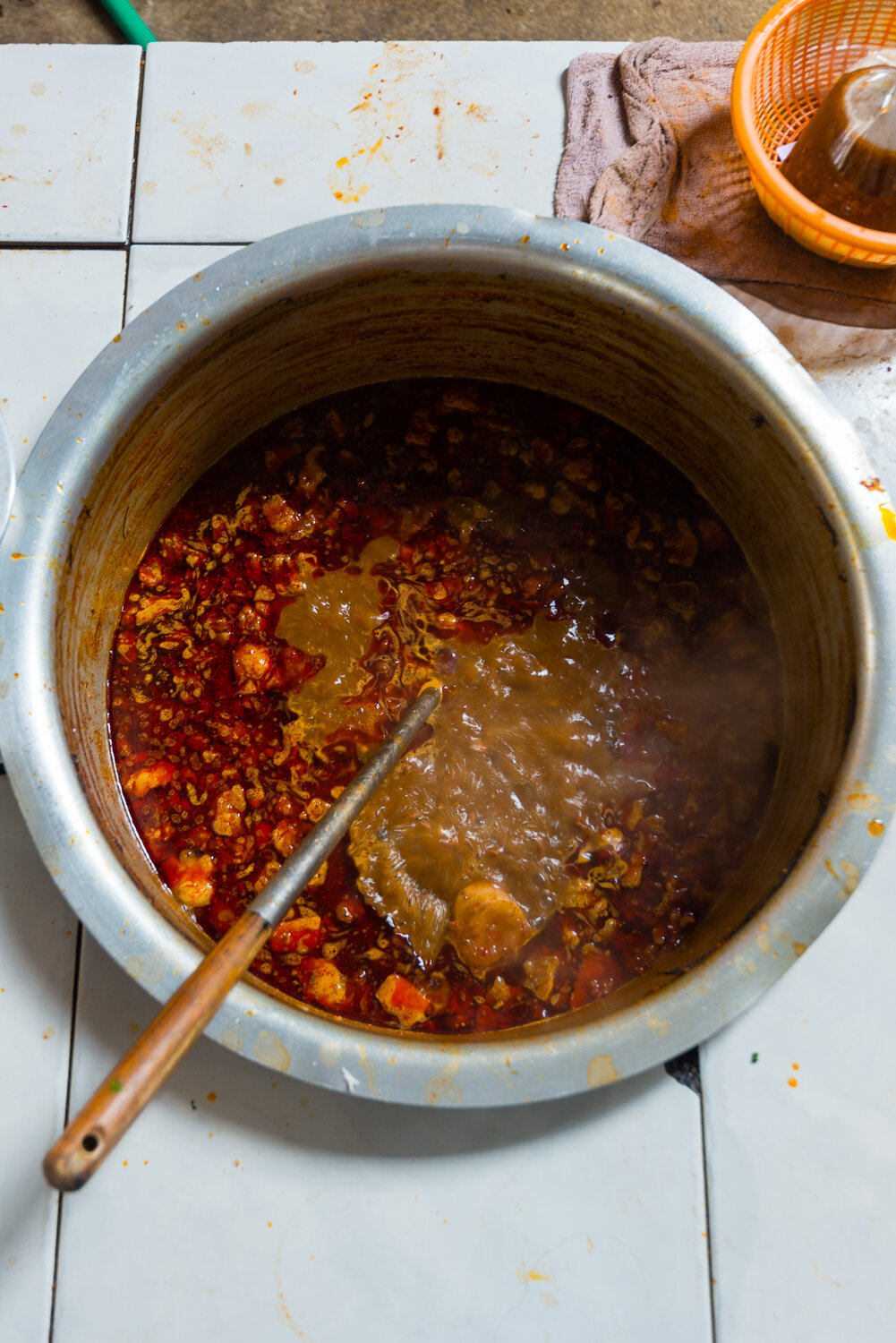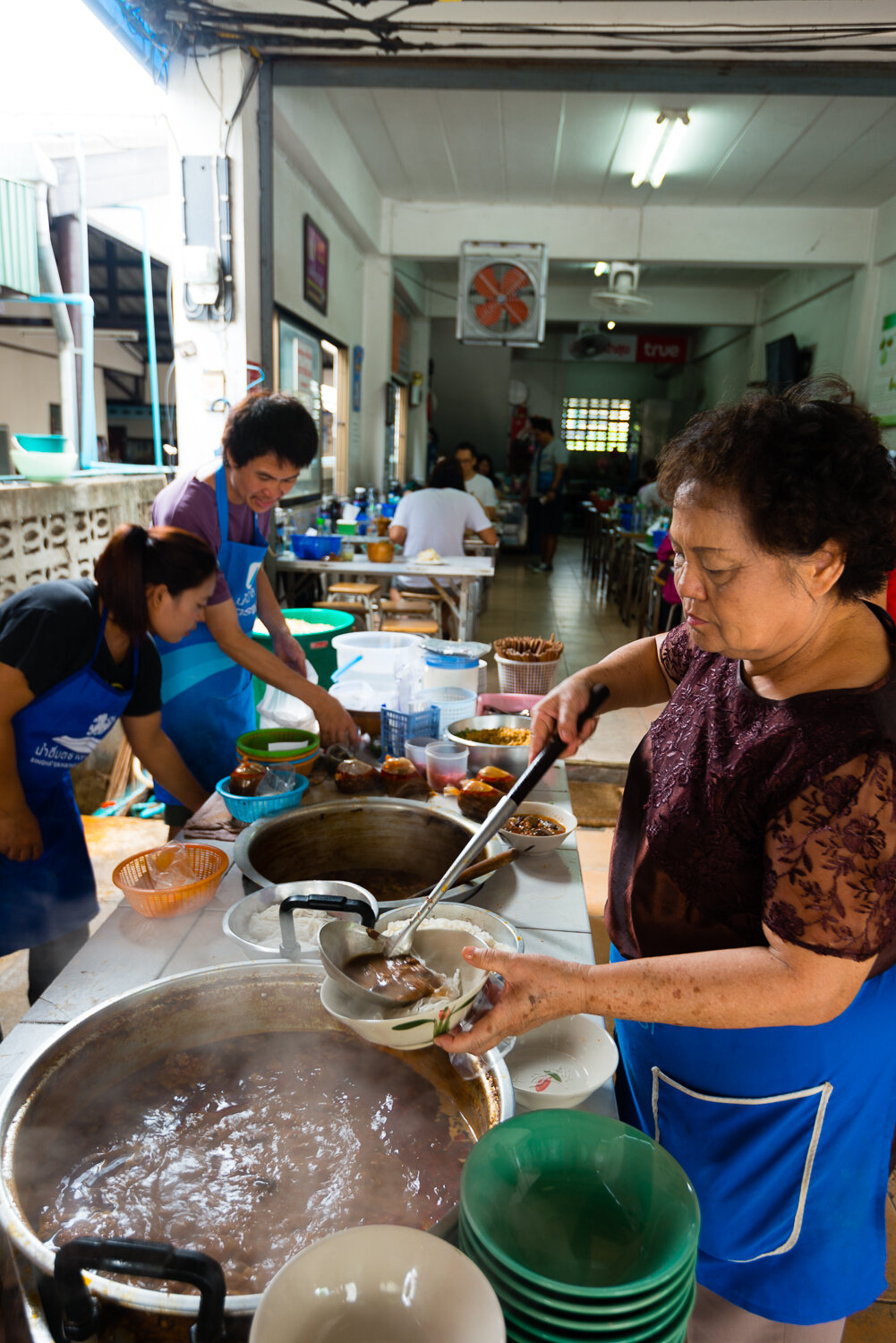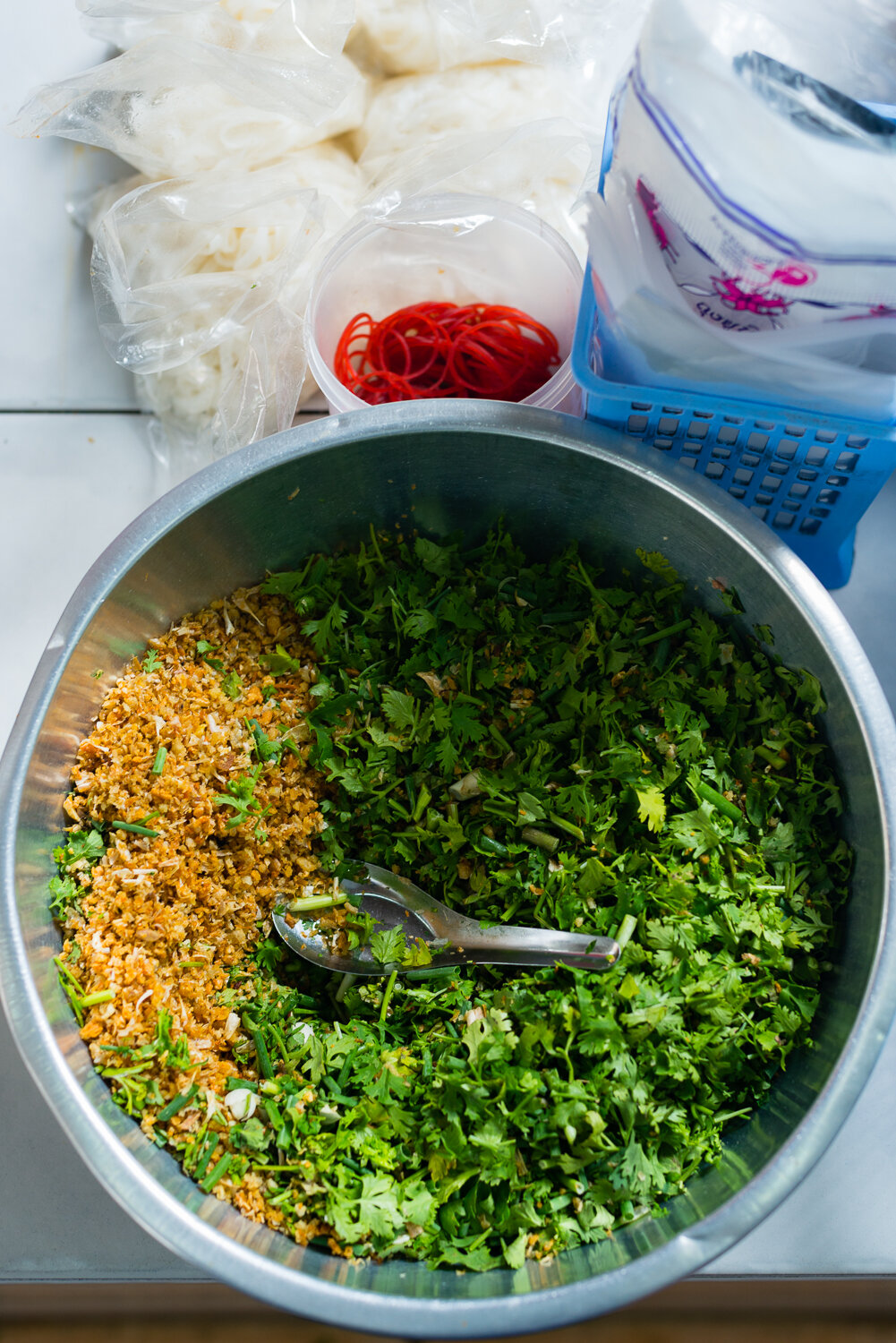Across northern Thailand, there are countless takes on khanom jiin naam ngiaw, thin, round rice noodles served in a hearty soup of pork and tomatoes. But the version served at Pa Suk, in Chiang Rai, stands out for being both traditional and adapted.
For starters, it’s made with beef, not the usual pork.
“My parents used to serve the beef version,” explains Nongkran Khuttiya, the second-generation owner of Pa Suk, a Chiang Rai noodle legend that’s been open for more than 40 years. “In the past, they didn’t include much meat; they just used the bones, it was more of a broth. I’ve adjusted my mother’s recipe to make it richer, meatier.”
As such, Nongkran’s broth can stand up to the heartier flat rice noodles, rather than the thin, round khanom jiin (known locally as khanom sen) that are the standard. But in a nod to the past, she insists on using chilies prepared the old way – dried over a fire – providing the dish with a deliciously smoky fragrance (if cooking outside of Thailand, smoked chipotles can be used as a rough equivalent). Her broth also includes more than a touch of thua nao khaep, disks of fermented, dried soybeans, which give the dish both a boost of umami and a pleasantly funky fragrance. (As with other recipes that include thua nao khaep, if you don’t have access to this obscure ingredient, Thai- or Chinese-style fermented soybean paste can be used as an approximate substitute, but its typically high salt content means you’ll have to adjust the seasoning accordingly.) The result is a bowl that seems to unite all of northern Thailand’s favorite flavors and fragrances: rich, meaty, smoky, spicy and umami.
Note that fresh khanom jiin noodles are generally not available outside of Southeast Asia. If cooking in the U.S., Andy Ricker of Pok Pok suggests using fine-gauge dried bún, Vietnamese rice noodles, following the cooking instructions on the package.
Khanom Sen Nuea
ขนมเส้นเนื้อ
A hearty beef and tomato broth served with thin rice noodles
Serves 4-6
Ingredients
For the Curry Paste
2 fermented soybean disks (approximately 30 grams total)
1 teaspoon salt
6 large dried chilies (approximately 6 grams total)
10 small dried chilies (approximately 5 grams total)
8 shallots (approximately 60 grams total), peeled and sliced
36 small cloves of garlic (approximately 30 grams total)
1 teaspoon shrimp paste
For the Soup
3 tablespoons vegetable oil
500 grams/1 pound beef bones
250 grams/1/2 pound boneless beef shortribs, cut into pieces approximately ½ inch square
250 grams/1/2 pound beef off-cuts (this can include skin, connective tissue, joints, cartilage), cut into pieces approximately ½ inch square
40 dried cotton tree flowers (approximately 15 grams total), boiled for 15 minutes or until tender
30 cherry tomatoes (approximately 300 grams total), halved
150 grams beef blood cake (or chicken, if beef isn’t available), cut into cubes approximately ½ inch square
2 tablespoons fish sauce
1 teaspoon salt
½ teaspoon MSG (optional)
Garnishes, Sides & Condiments
600 grams/1½ pounds khanom jiin noodles or 300 grams of flat, dried rice noodles
2 sprigs green onion (approximately 40 grams total), chopped
4 small bunches cilantro (approximately 20 grams total), chopped
1 small head of cabbage (approximately 200 grams total), shredded finely
150 grams of mung bean sprouts
200 grams of pickled mustard greens, chopped
fish sauce
Thai Kitchen Tools
granite mortar and pestle
Procedure
Prepare the curry paste: Over a flame or coals (or in a toaster), toast the fermented soybean disks until golden in color, fragrant and uniformly blistered. To a mortar and pestle, add the salt and large dried chilies. Pound and grind to a coarse powder. Add the small dried chilies, pound and grind to a coarse powder. Add the shallots and garlic, pound and grind to a coarse paste. Add the shrimp paste, pound and grind to a coarse paste. Add the fermented soybean disks, pound and grind to a fine paste.
Prepare the soup: To a medium sized stockpot over medium-low heat, add the oil and curry paste. Fry 1 or 2 minutes, until fragrant and combined with oil. Add 2½ quarts of water, the beef bones, the boneless beef shortribs, the beef off-cuts and the cotton tree flowers. Increase heat to high and bring to the boil. Reduce heat to a rapid simmer, and simmer, uncovered, until the soup has reduced by approximately a quarter and the beef is tender, about 1 hour. Remove and discard the beef bones. Add the cherry tomatoes, blood, fish sauce, salt and MSG (if using). Simmer another 10 minutes, or until the tomatoes have just started to soften. Taste, adjusting seasoning, if necessary; the khanom sen nuea should taste beefy, umami and slightly spicy, and should be fragrant, from the fermented soybean disks and smoked chilies.
To a bowl, add approximately 100 grams of khanom jiin noodles or thin rice noodles and top with approximately 1 to 1½ cups of the soup. Garnish with green onion and cilantro and serve with optional sides of cabbage, pickled mustard greens, mung beans and fish sauce.















